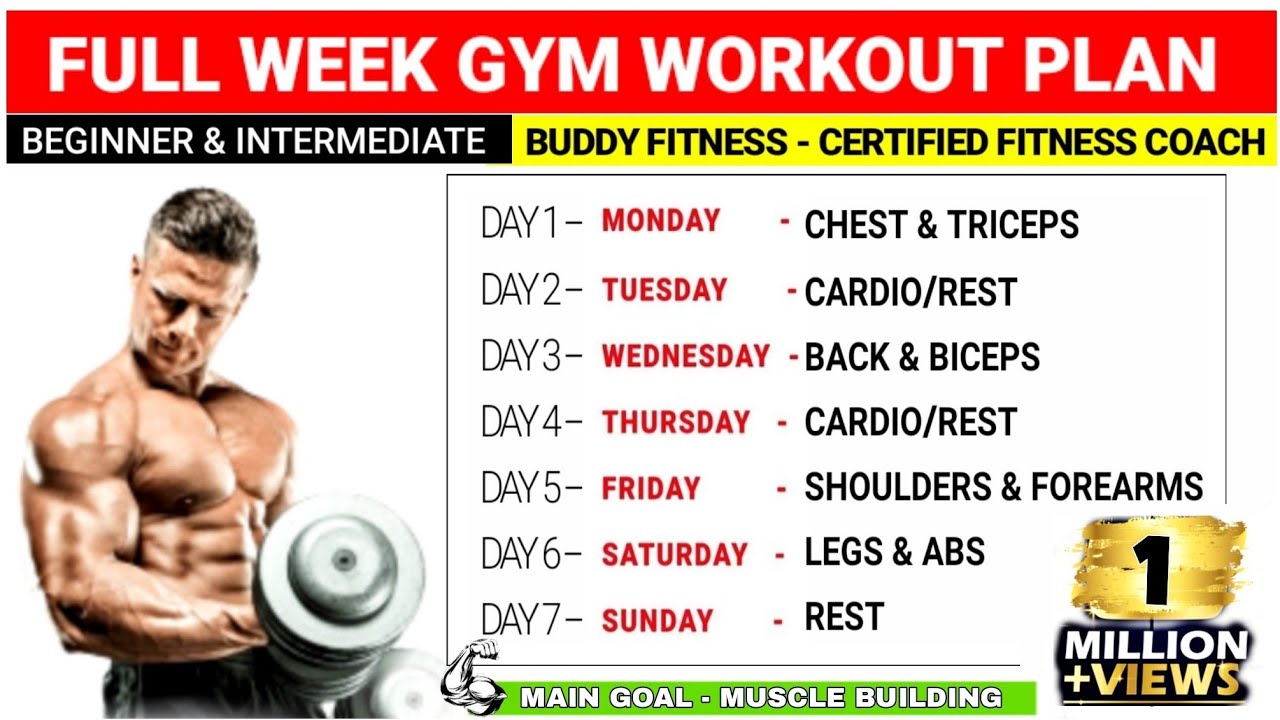Effective workout routine for building lean muscle mass and improving strength: Forget those flimsy, ineffective workouts! We’re diving headfirst into a program that’ll sculpt you into a lean, mean, strength-machine. Prepare for a journey of muscle growth so intense, your biceps will spontaneously start flexing while you sleep. We’ll cover everything from meticulously crafted exercise plans that’ll make your muscles sing to nutrition strategies so effective, your fridge will start whispering motivational quotes.
Get ready to unleash your inner Adonis (or Amazon!).
This guide will equip you with the knowledge and tools to build a personalized workout plan, tailored to your fitness level and goals. We’ll explore the science behind muscle growth, providing practical strategies for maximizing your results. We’ll debunk common fitness myths, and offer creative solutions to common workout challenges, ensuring you stay motivated and injury-free throughout your transformation. Think of it as your personal trainer, nutritionist, and motivational life coach, all rolled into one surprisingly affordable package (the price of this guide, that is!).
Defining Lean Muscle Mass and Strength Gains
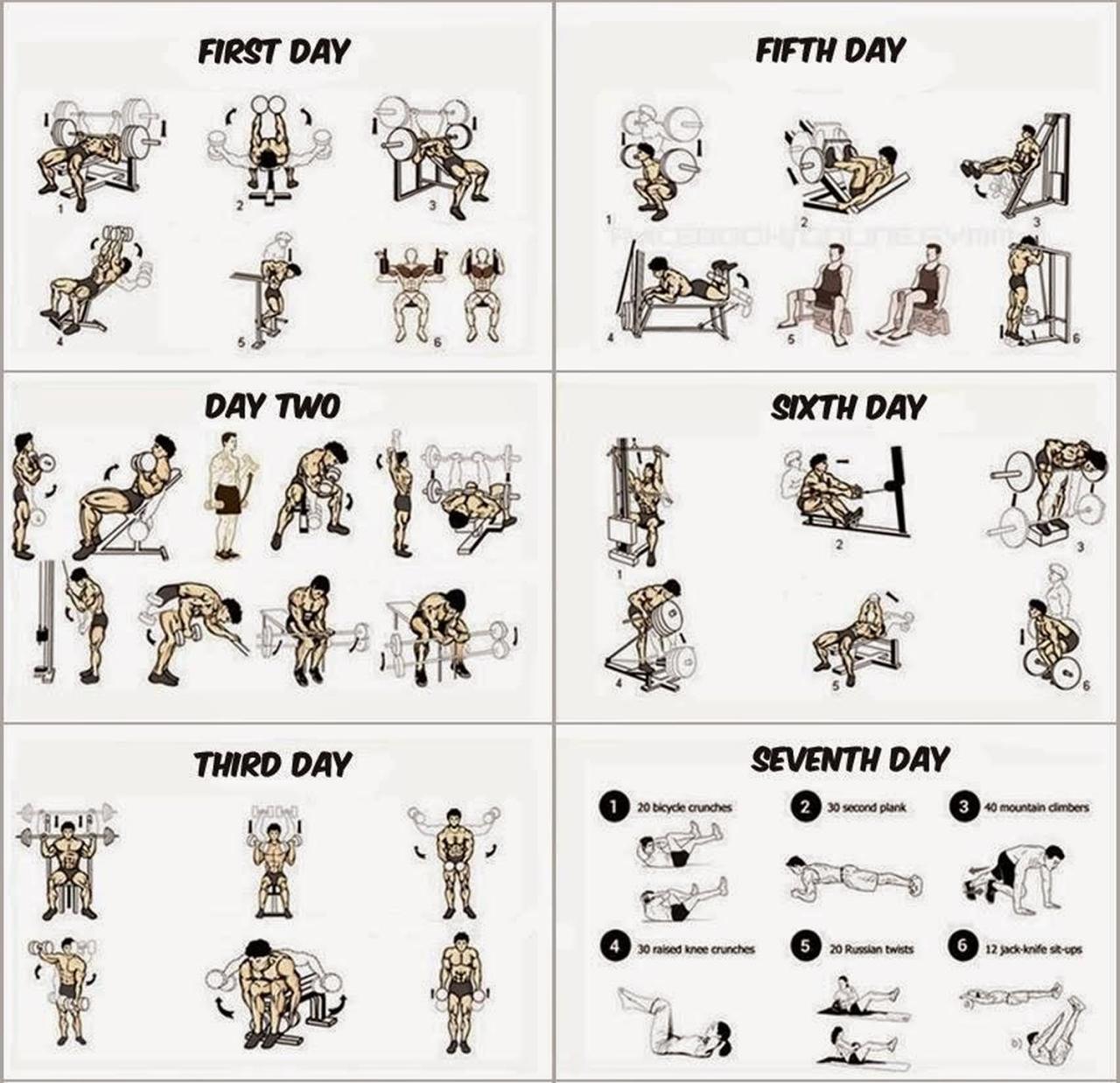
So, you want to sculpt yourself into a lean, mean, muscle machine? Fantastic! But let’s get one thing straight: building muscle and getting stronger aren’t exactly the same thing, even though they often go hand-in-hand like peanut butter and… well, more peanut butter. Think of it like this: you can have a tiny, incredibly strong chihuahua (strength) or a lumbering, less-strong Great Dane (muscle mass).
We’re aiming for a lean, powerful greyhound – the best of both worlds.Building lean muscle mass and increasing strength are related but distinct physiological processes. While both require stimulating muscle fibers, the emphasis differs. Lean muscle mass refers to the amount of muscle tissue relative to body fat. Strength, on the other hand, is the ability to exert force.
You can be strong without a lot of muscle (think powerlifters focusing on explosive strength), and you can have a lot of muscle without being proportionally strong (think bodybuilders prioritizing hypertrophy).
Lean Muscle Growth Factors
Several key factors influence how well your muscles respond to training and nutrition, ultimately determining your lean muscle growth. These aren’t just abstract concepts; they’re the nuts and bolts of muscle building. Ignoring them is like trying to bake a cake without flour – you’re going to have a bad time.
- Progressive Overload: This is the cornerstone of muscle growth. It simply means consistently challenging your muscles with progressively heavier weights, more repetitions, or more sets over time. Think of it as a constant “muscle upgrade” – your body adapts to the challenge, leading to growth.
- Nutrition: You can’t build a house without bricks, and you can’t build muscle without the right nutrients. Sufficient protein intake is crucial, providing the amino acids needed for muscle repair and growth. Carbohydrates fuel your workouts, and healthy fats support overall hormone function.
- Recovery: Your muscles don’t grow during your workouts; they grow while they’re resting and recovering. Adequate sleep, stress management, and strategic rest days are vital for optimal muscle protein synthesis.
- Genetics: While you can’t change your genes, understanding your genetic predisposition can help you tailor your training and nutrition strategies. Some people naturally build muscle more easily than others.
- Hormonal Factors: Hormones like testosterone and growth hormone play significant roles in muscle growth. Maintaining healthy hormone levels through proper nutrition, training, and stress management can positively influence muscle building.
Training Methodologies for Simultaneous Goals
Different training methodologies can be employed to build both lean muscle mass and strength simultaneously. The key is finding a balance that works for you.
| Training Methodology | Focus | Description |
|---|---|---|
| Strength Training (Low Reps, High Weight) | Strength | Focuses on lifting heavy weights for low repetitions (1-5 reps) to maximize strength gains. This is great for building a solid foundation of strength. |
| Hypertrophy Training (Moderate Reps, Moderate Weight) | Muscle Mass | Emphasizes higher repetitions (8-12 reps) with moderate weight to stimulate muscle growth. This is ideal for increasing muscle size and definition. |
| Full-Body Training | Strength & Mass | Works all major muscle groups in each workout, promoting overall strength and muscle growth. It’s a highly efficient approach for building a well-rounded physique. |
| Circuit Training | Strength & Mass | Involves performing a series of exercises with minimal rest, improving both strength and endurance while boosting calorie burn. |
“The key to success isn’t finding a magical training program, but finding a program that you can stick with consistently.”
Designing a Workout Program
So, you’re ready to sculpt yourself into a lean, mean, muscle machine? Fantastic! But before you start bench-pressing your body weight (don’t actually do that unless you’re already a seasoned lifter!), we need a plan. A well-structured workout program is your roadmap to success, guiding you towards those glorious gains without leaving you injured or utterly exhausted. Think of it as a meticulously crafted recipe for a delicious physique.This program focuses on building a solid foundation of strength and lean muscle mass, perfect for beginners.
Remember, consistency is key! More isn’t always better; smart training is.
Twelve-Week Beginner Strength and Hypertrophy Program
This program utilizes a full-body approach for the first 4 weeks, then transitions to an upper/lower split for the remaining 8 weeks. This allows for sufficient recovery while still hitting all muscle groups regularly. Remember to focus on proper form above all else – a perfect rep with lighter weight is far better than a sloppy rep with heavy weight.
| Day | Exercise | Sets | Reps |
|---|---|---|---|
| Monday | Squats | 3 | 8-12 |
| Monday | Bench Press | 3 | 8-12 |
| Monday | Bent-Over Rows | 3 | 8-12 |
| Monday | Overhead Press | 3 | 8-12 |
| Wednesday | Deadlifts | 1 | 5 |
| Wednesday | Pull-ups (or Lat Pulldowns) | 3 | As many reps as possible (AMRAP) |
| Wednesday | Dips (or Chest Dips) | 3 | AMRAP |
| Friday | Lunges | 3 | 10-15 per leg |
| Friday | Dumbbell Rows | 3 | 10-15 per arm |
| Friday | Bicep Curls | 3 | 10-15 |
| Friday | Triceps Extensions | 3 | 10-15 |
Weeks 5-12 (Upper/Lower Split): Follow a similar structure, but split the exercises into upper body (Monday & Thursday) and lower body (Tuesday & Friday) workouts. You can add more isolation exercises (like bicep curls and triceps extensions) on upper body days and calf raises on lower body days. Remember to progressively overload – gradually increase the weight, reps, or sets over time.
Progressive Overload: The Secret Sauce
Progressive overload is the cornerstone of muscle growth and strength gains. It simply means consistently challenging your muscles by gradually increasing the demands placed upon them. This can be achieved by increasing the weight you lift, the number of repetitions you perform, or the number of sets you complete. It’s about pushing your limits, just a little bit more, each workout.
Think of it like this: your muscles are like a stubborn mule – you need to consistently add more weight to the cart to make them stronger.
Rest and Recovery: The Unsung Heroes
You’ve conquered your workout, now conquer the couch (responsibly, of course!). Rest and recovery are just as crucial as the workouts themselves. During rest, your muscles repair and rebuild, becoming stronger and larger. Lack of sufficient rest leads to overtraining, hindering progress and potentially causing injuries. Aim for at least one full rest day per week, and prioritize sleep (7-9 hours a night).
Listen to your body – if you’re feeling excessively sore or fatigued, take an extra rest day. Remember, muscle growth happens outside the gym, not just inside.
Exercise Selection and Techniques
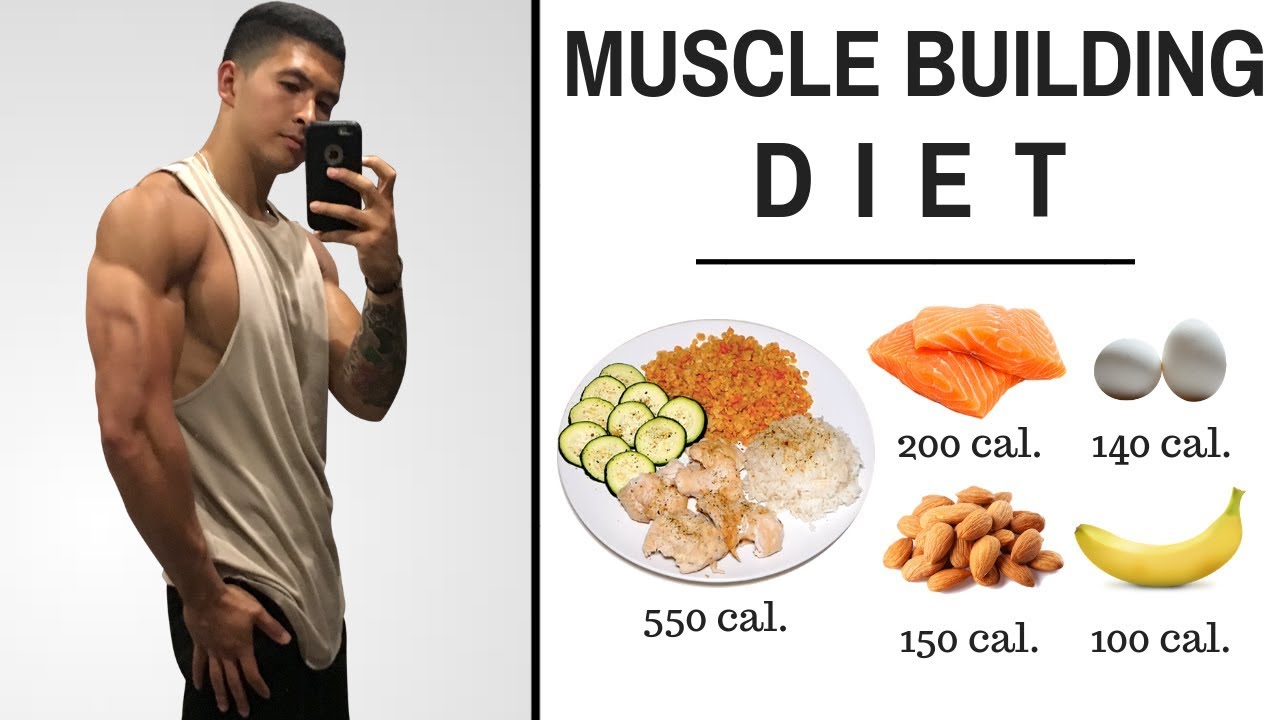
Choosing the right exercises and mastering the correct form is crucial for building lean muscle and strength efficiently, while simultaneously minimizing your risk of becoming acquainted with the orthopedic surgeon down the street. Think of it as a finely tuned engine – the right parts working in harmony. Poor form is like using rusty bolts and mismatched pistons; it’s a recipe for disaster (and possibly a pulled hamstring).
Compound exercises, which work multiple muscle groups simultaneously, are your best friends in this muscle-building journey. They’re more efficient than isolation exercises (which focus on a single muscle), allowing you to pack more muscle-building punch into your workout. Plus, they’ll make you feel like a superhero – capable of lifting things that would normally require a small crane.
Effective Compound Exercises
The following exercises form the bedrock of any effective strength-building program. Remember, consistency and proper form are key to reaping the rewards – think of it as building a skyscraper; you need a solid foundation to avoid a catastrophic collapse.
- Squats: Targets quads, glutes, hamstrings, and core. Imagine your legs are powerful springs, pushing you back up after a deep squat.
- Deadlifts: Works the entire posterior chain (back, glutes, hamstrings). Think of lifting a heavy barbell like gracefully pulling a sword from its sheath.
- Bench Press: Primarily targets chest, shoulders, and triceps. Picture yourself pushing a heavy object away with explosive power.
- Overhead Press: Works shoulders, triceps, and upper back. Imagine lifting a heavy object smoothly above your head.
- Rows: Targets back muscles, biceps, and forearms. Visualize pulling yourself up towards a sturdy bar.
Exercise Technique and Variations
Proper form is paramount to avoid injury and maximize results. Think of it as writing calligraphy; precise movements are essential to achieve the desired outcome.
- Squats: Feet shoulder-width apart, back straight, chest up, lower until thighs are parallel to the ground. Variations include front squats (emphasizing quads) and goblet squats (easier on the lower back). The drawbacks of improper form include knee injuries and lower back pain.
- Deadlifts: Maintain a neutral spine, hinge at the hips, grip the bar with an overhand or mixed grip, pull the weight up explosively. Variations include sumo deadlifts (wider stance, emphasizing glutes and hamstrings) and Romanian deadlifts (emphasizing hamstrings). Improper form can lead to back injuries.
- Bench Press: Lie on a bench, feet flat on the floor, grip the bar slightly wider than shoulder-width, lower the bar to your chest, push it back up. Variations include incline bench press (emphasizing upper chest) and decline bench press (emphasizing lower chest). Improper form may result in shoulder or chest injuries.
- Overhead Press: Stand with feet shoulder-width apart, grip the bar slightly wider than shoulder-width, press the bar overhead, lower it slowly. Variations include seated overhead press (better stability) and Arnold press (rotating the wrists during the movement). Incorrect form can cause shoulder impingement.
- Rows: Maintain a straight back, pull the weight towards your chest, squeeze your shoulder blades together. Variations include barbell rows (more weight capacity) and dumbbell rows (better for unilateral strength). Improper form can lead to back strain.
Nutrition for Lean Muscle Growth
Fueling your body for lean muscle growth isn’t about starving yourself; it’s about providing the right building blocks in the right amounts. Think of your muscles as a magnificent construction project – you need the right materials (nutrients) and a skilled architect (your workout plan) to build something truly impressive. Ignoring nutrition is like trying to build a skyscraper with toothpicks and glue – it’s not going to end well.This section details the nutritional strategies crucial for maximizing muscle growth and recovery.
We’ll cover the macronutrient requirements, provide a sample meal plan, and emphasize the importance of hydration and micronutrients. Get ready to become a nutritional ninja!
Macronutrient Requirements for Muscle Growth
To build lean muscle, you need a balanced intake of protein, carbohydrates, and fats. Each macronutrient plays a vital role in muscle protein synthesis, energy production, and overall recovery. Insufficient intake of any of these will hinder your progress, leading to frustration and possibly injury.Protein is the undisputed king of muscle building. It provides the amino acids that are the building blocks of muscle tissue.
Aim for 1.6-2.2 grams of protein per kilogram of body weight (0.73-1 gram per pound). For example, a 70kg (154lb) individual should consume between 112-154 grams of protein daily. Carbohydrates are your body’s primary energy source, fueling your workouts and replenishing glycogen stores (muscle fuel). Choose complex carbohydrates like brown rice, quinoa, and sweet potatoes over refined sugars.
Fats are essential for hormone production, nutrient absorption, and overall health. Focus on healthy fats found in avocados, nuts, seeds, and olive oil.
Sample Daily Meal Plan, Effective workout routine for building lean muscle mass and improving strength
The following meal plan provides a balanced intake of macronutrients, emphasizing lean protein sources and complex carbohydrates. Remember, this is just a sample, and your individual needs may vary depending on your activity level, body composition, and individual goals. Consult a registered dietitian or nutritionist for personalized guidance.
| Meal | Food Item | Quantity | Macronutrient Breakdown (Approximate) |
|---|---|---|---|
| Breakfast | Oatmeal with berries and protein powder | 1 cup oatmeal, ½ cup berries, 1 scoop protein powder | Protein: 30g, Carbs: 50g, Fat: 10g |
| Lunch | Grilled chicken salad with mixed greens and quinoa | 4oz grilled chicken, 2 cups mixed greens, ½ cup quinoa | Protein: 40g, Carbs: 40g, Fat: 15g |
| Dinner | Salmon with roasted sweet potatoes and asparagus | 4oz salmon, 1 medium sweet potato, 1 cup asparagus | Protein: 35g, Carbs: 50g, Fat: 20g |
| Snacks | Greek yogurt with almonds, Apple slices with peanut butter | 1 cup Greek yogurt, ¼ cup almonds, 1 medium apple, 2 tbsp peanut butter | Protein: 25g, Carbs: 30g, Fat: 20g |
The Role of Hydration and Micronutrients
Hydration is paramount for optimal muscle function and recovery. Water helps transport nutrients, regulate body temperature, and flush out metabolic waste. Aim for at least 8 glasses of water per day, and more if you’re sweating profusely during workouts. Micronutrients, including vitamins and minerals, are essential for various metabolic processes, supporting muscle growth and overall health. Focus on a balanced diet rich in fruits and vegetables to ensure adequate micronutrient intake.
Consider a multivitamin if you’re struggling to meet your daily needs through diet alone. Don’t forget the importance of sleep; adequate rest allows your body to repair and rebuild muscle tissue. Think of sleep as your muscle’s personal spa day!
Tracking Progress and Adjustments
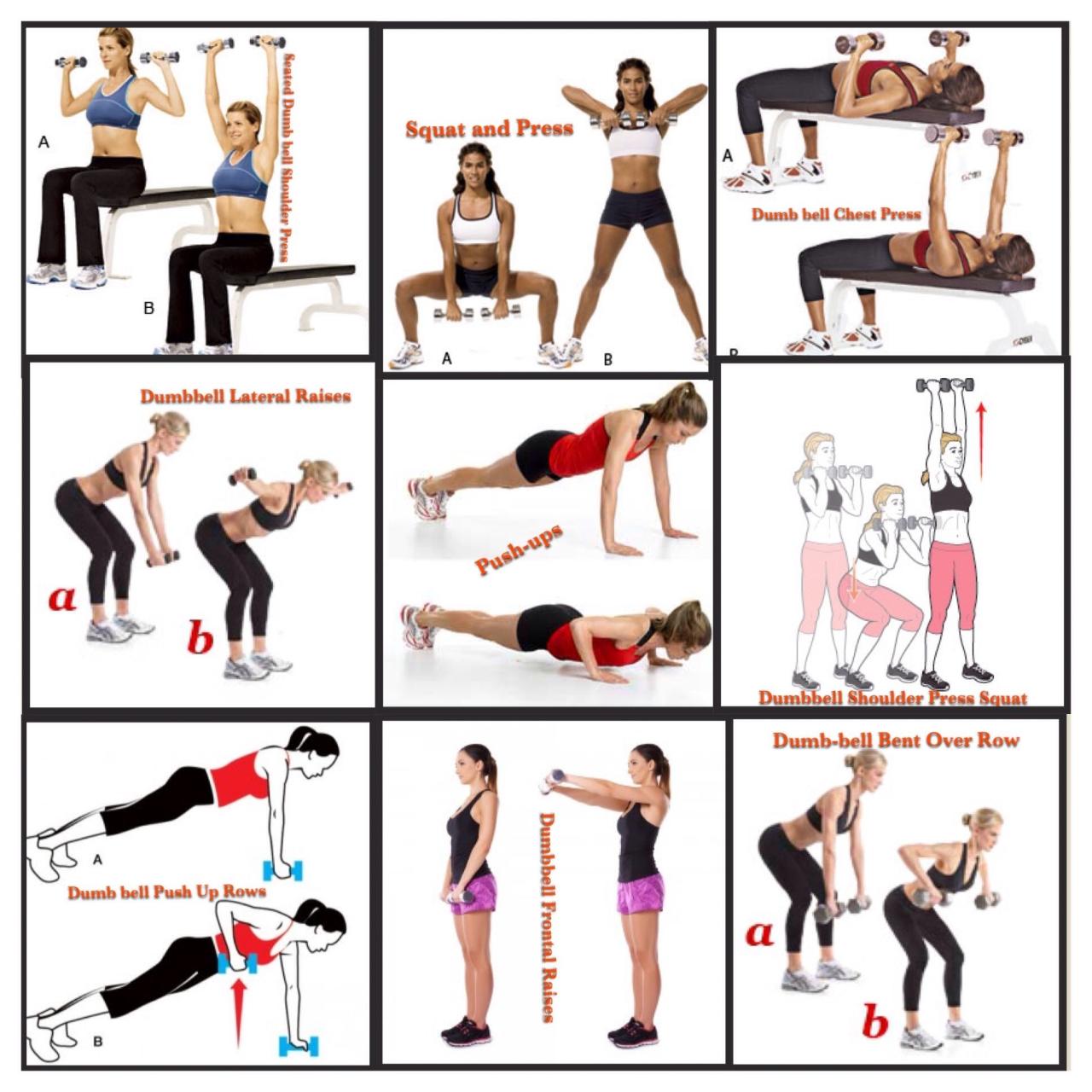
So, you’ve been diligently following your workout plan, fueling your body like a champion, and feeling the burn (in a good way, of course!). But how do you know if all that hard work is actually paying off? This is where tracking your progress comes in – it’s not just about seeing numbers go up, it’s about understanding your body’s response to training and making smart adjustments along the way.
Think of it as your personal fitness detective work, uncovering clues to unlock your ultimate muscle-building potential.Tracking your progress is crucial for optimizing your workouts and preventing those dreaded plateaus. It allows you to see what’s working, what needs tweaking, and ensures you’re consistently challenging yourself without overdoing it and risking injury. By consistently monitoring your performance, you’ll gain a much clearer understanding of your body’s response to your training regimen, paving the way for more effective and efficient gains.
Workout Performance Tracking
To effectively track your progress, you need a reliable system. This could be as simple as a notebook, a spreadsheet, or a dedicated fitness app. Regardless of your chosen method, consistently recording key metrics is essential. This involves noting down the weight lifted, the number of repetitions (reps) performed, and the number of sets completed for each exercise.
For example, if you’re doing squats, you might record: “Squats: 135 lbs, 3 sets of 8 reps.” Over time, comparing these numbers will reveal your strength gains. Consider also noting down any perceived exertion (how hard the workout felt on a scale of 1-10) to gain a holistic understanding of your progress. Don’t forget to date your entries! A well-maintained log will become your personal fitness diary, charting your journey to lean muscle mastery.
Identifying and Addressing Plateaus
Hitting a plateau is a common experience in fitness. It’s when your progress seems to stall, despite your continued efforts. Don’t despair! This is a signal that your body has adapted to your current workout routine and needs a new challenge. Identifying a plateau is relatively straightforward: if you haven’t seen significant improvements in your lifts, reps, or sets over several weeks (typically 4-6 weeks), it’s time to make adjustments.
This might involve increasing the weight you lift, increasing the number of reps or sets, changing the exercises entirely, or incorporating advanced training techniques like drop sets or supersets. For instance, if you’ve plateaued on bench presses at 135 lbs for 3 sets of 8 reps, you could try increasing the weight to 145 lbs, adding a fourth set, or incorporating a drop set (reducing the weight after reaching failure).
Measuring Body Composition Changes
While strength gains are important, tracking changes in your body composition – specifically, lean muscle mass and fat loss – provides a more comprehensive picture of your progress. Precise measurement requires specialized tools, but several methods offer reasonable approximations. One common method is using a body fat scale, which utilizes bioelectrical impedance analysis (BIA) to estimate body fat percentage.
Keep in mind that BIA readings can vary depending on hydration levels, so consistency is key. Another approach involves taking regular progress photos, paying attention to changes in muscle definition and overall physique. These photos should be taken under consistent lighting conditions and from the same angles. While not precise, they can offer a visual representation of your progress.
Finally, measuring your waist circumference can be a helpful indicator of fat loss, although it’s not as comprehensive as body composition analysis. Remember, consistent monitoring and realistic expectations are crucial. Significant changes in body composition take time and dedication.
Supplement Considerations
Let’s be honest, the supplement industry is a wild west of promises and powders. While some supplements can genuinely aid your muscle-building journey, others are essentially overpriced pixie dust. Navigating this landscape requires a healthy dose of skepticism and a solid understanding of what these products actually do (or don’t). Remember, supplements
Want a body that looks like it wrestled a bear and won? Building lean muscle and serious strength requires a killer workout routine. Finding the right program is key, and that’s where checking out the best strength training program comes in handy. Once you’ve got your program dialed in, remember consistency is king – stick with it, and you’ll be flexing those gains in no time!
supplement* a healthy lifestyle, they don’t replace it.
The use of supplements to enhance muscle growth and strength gains is a common practice among athletes and fitness enthusiasts. However, it’s crucial to understand that these products are not magical shortcuts. Their effectiveness depends heavily on factors like your training regimen, diet, and genetics. Furthermore, some supplements carry potential risks and side effects, making informed decision-making paramount.
Creatine Monohydrate
Creatine monohydrate is probably the most researched and widely used supplement for strength and power gains. It works by increasing the availability of creatine phosphate in your muscles, which helps replenish ATP (your body’s energy currency) during high-intensity exercise. This translates to increased strength, power output, and potentially, muscle growth. However, some individuals experience mild gastrointestinal side effects like bloating or diarrhea, especially when starting with high doses.
It’s generally recommended to start with a loading phase (higher dosage for a short period) followed by a maintenance phase (lower dosage). Long-term use is generally considered safe for healthy individuals.
Whey Protein Powder
Whey protein is a fast-digesting protein derived from milk. It’s a popular choice for post-workout recovery because it quickly delivers amino acids to your muscles, aiding in protein synthesis and muscle repair. Whey protein can be particularly beneficial for individuals who struggle to meet their daily protein requirements through diet alone. However, some individuals are lactose intolerant and may experience digestive discomfort.
Furthermore, excessive protein intake can strain your kidneys, so moderation is key. Look for whey protein isolates if you are sensitive to lactose.
Potential Risks and Side Effects Associated with Supplement Use
Before diving into a specific list, it’s important to note that the supplement industry is largely unregulated. This means that product quality and purity can vary significantly between brands. Always choose reputable brands that have undergone third-party testing to ensure they contain what the label claims. Additionally, some supplements can interact negatively with medications or pre-existing health conditions.
Consult your doctor or a registered dietitian before starting any new supplement regimen, especially if you have any underlying health concerns.
Supplement List, Intended Use, and Potential Cautions
Choosing supplements should be a carefully considered decision, based on your individual needs and goals. Here’s a summary:
- Creatine Monohydrate: Increases strength and power output; potential side effects include bloating and gastrointestinal upset. Start with a loading phase, then maintain a lower dose.
- Whey Protein Powder: Aids muscle recovery and protein synthesis; potential side effects include digestive discomfort (especially for those with lactose intolerance). Choose isolate if sensitive to lactose.
- BCAAs (Branched-Chain Amino Acids): May reduce muscle soreness and fatigue; potential side effects are rare but can include digestive issues. Generally considered safe, but individual reactions vary.
- Caffeine: Enhances athletic performance by increasing alertness and energy levels; potential side effects include anxiety, insomnia, and increased heart rate. Moderate consumption is key.
Remember, the most effective supplement is a balanced diet and consistent training. Don’t expect miracles from powders and pills; focus on the fundamentals first.
Addressing Common Challenges: Effective Workout Routine For Building Lean Muscle Mass And Improving Strength
Building lean muscle and boosting strength is a marathon, not a sprint (unless you’re a cheetah, in which case, please share your secrets!). It’s a journey filled with triumphs and, let’s be honest, some seriously frustrating setbacks. This section tackles the common hurdles you might encounter and provides strategies to help you conquer them, transforming those obstacles into stepping stones to a stronger, leaner you.The reality is, life throws curveballs.
Motivation can vanish faster than a free pizza at a fitness expo, time seems to evaporate, and injuries can derail even the most dedicated workout warrior. But fear not, fellow fitness enthusiast! With the right approach, you can navigate these challenges and stay on track towards your goals.
Lack of Motivation
Motivation, that fickle friend, can be as reliable as a chocolate chip cookie’s promise of a single chocolate chip. Combatting its sporadic nature requires a multi-pronged approach. First, set realistic, achievable goals. Instead of aiming for a superhero physique overnight, celebrate smaller victories – hitting the gym three times this week instead of zero, mastering a new exercise, or even just putting on your workout clothes! Second, find an accountability partner, a workout buddy who will celebrate your wins and nudge you when motivation dips.
Third, mix up your routine. Stagnation breeds boredom, which breeds demotivation. Try a new class, explore different exercises, or listen to an awesome playlist. Remember, fitness should be fun, not a chore.
Time Constraints
Life is busy. Juggling work, family, and social life leaves precious little time for anything, let alone intense workouts. The solution isn’t to magically create extra hours in the day (although that would be amazing!), but to prioritize and optimize your existing time. High-intensity interval training (HIIT) is your best friend here. Short bursts of intense exercise followed by brief recovery periods are incredibly efficient, maximizing calorie burn and muscle growth in minimal time.
Also, incorporate exercise into your daily routine. Take the stairs instead of the elevator, walk or cycle to work if possible, and sneak in some bodyweight exercises during your lunch break.
Injuries
Injuries are a bummer, no doubt. But they don’t have to be a complete roadblock. The key is to listen to your body and seek professional guidance. Don’t push through pain; you’ll only worsen the injury. Consult a physical therapist or doctor for proper diagnosis and rehabilitation.
They can recommend modifications to your workout routine that minimize stress on the injured area while still allowing you to maintain fitness. For example, if you have a knee injury, you might substitute squats with elliptical training or swimming. Remember, recovery is part of the process.
Modifications for Pre-existing Health Conditions
Working out with pre-existing health conditions requires careful planning and consideration. Always consult your doctor or a qualified healthcare professional before starting any new exercise program. They can help you design a safe and effective plan tailored to your specific needs and limitations. For example, individuals with hypertension might need to modify cardio intensity, while those with arthritis may benefit from low-impact exercises like swimming or cycling.
Don’t be afraid to ask for help; your health is paramount.
Maintaining Consistency
Consistency is the name of the game. Think of it as building a house – one brick at a time. Missing a workout is like skipping a brick; it doesn’t bring the house down, but it slows progress. To maintain consistency, establish a routine and stick to it as much as possible. Schedule your workouts like important appointments and treat them with the same level of respect.
Find a workout time that fits your schedule, whether it’s early morning, lunchtime, or evening. And remember, progress, not perfection, is the goal. Don’t beat yourself up over missed workouts; just get back on track as soon as you can. Reward yourself for your achievements (a healthy reward, of course!).
Visual Representation of Exercises
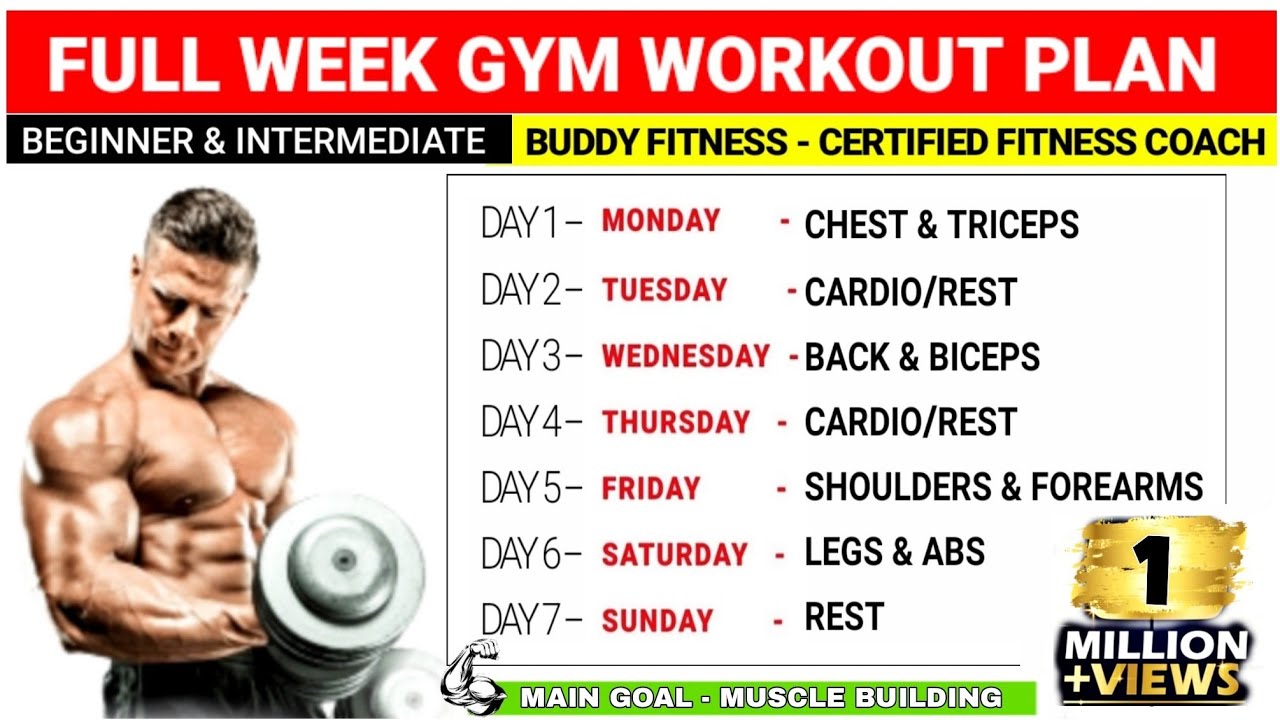
Pictures are worth a thousand words, especially when it comes to mastering proper form in weight training. Failing to visualize the correct execution can lead to injury and suboptimal results. Let’s paint a picture, with words, of perfect form for three foundational lifts.
Bench Press
The bench press, a classic for chest development, requires precision to avoid shoulder impingement and maximize gains. Imagine a superhero holding a barbell – that’s the posture we aim for. Lie supine on a bench, feet flat on the floor, and grip the bar slightly wider than shoulder-width apart, with your hands in a pronated grip (palms facing away).
Your back should be flat against the bench, creating a stable base. Before lifting, take a deep breath, brace your core, and unrack the bar smoothly. Lower the bar to your chest, touching it lightly, then forcefully push the bar back up, exhaling as you extend your arms. The entire movement should be controlled, avoiding any bouncing or jerky motions.
Think of your body as a single, powerful unit, working together to lift the weight. An image would show the straight line from head to heels, the slight arch in the lower back, and the controlled movement of the bar.
Squat
The squat, king of the leg exercises, is a full-body movement that demands attention to detail. Stand with your feet slightly wider than shoulder-width apart, toes slightly pointed outward. Your back should remain straight, with a natural curve in your lower back – avoid rounding your back. The bar should rest across your upper back, comfortably balanced. As you descend, push your hips back and bend your knees, keeping your weight in your heels.
Imagine sitting back into a chair – that’s the feeling you should aim for. Go as low as you can while maintaining proper form, aiming for parallel or slightly below parallel to the floor. Then, forcefully drive through your heels to return to the starting position. An image would clearly demonstrate the foot placement, the straight back, and the depth of the squat, showing the parallel or slightly below-parallel position of the thighs to the ground.
Deadlift
The deadlift, the ultimate test of strength, requires a precise setup to avoid injury and maximize power. Stand with your feet hip-width apart, directly beneath the barbell. Your grip should be slightly wider than shoulder-width, with your hands facing your body. Bend at your hips and knees, keeping your back straight and your core engaged. Grab the bar with a firm grip, maintaining a neutral spine.
Lift the bar by extending your legs and hips simultaneously, keeping the bar close to your body throughout the movement. Avoid rounding your back – imagine a straight line from your head to your heels. Lower the bar back to the ground with the same controlled movement. An image would show the straight back, the bar close to the body, and the simultaneous extension of the legs and hips, emphasizing the straight line from head to heels throughout the lift.
Final Review
So, there you have it – your roadmap to a stronger, leaner you! Remember, consistency is key. Don’t expect overnight miracles; building lean muscle and strength takes time and dedication. But with a well-structured plan, proper nutrition, and a healthy dose of perseverance, you’ll be amazed at what your body can achieve. Now go forth, and conquer those weights (and maybe even that stubborn muffin top!).
And remember, if all else fails, blame the genetics…just kidding (mostly!).
